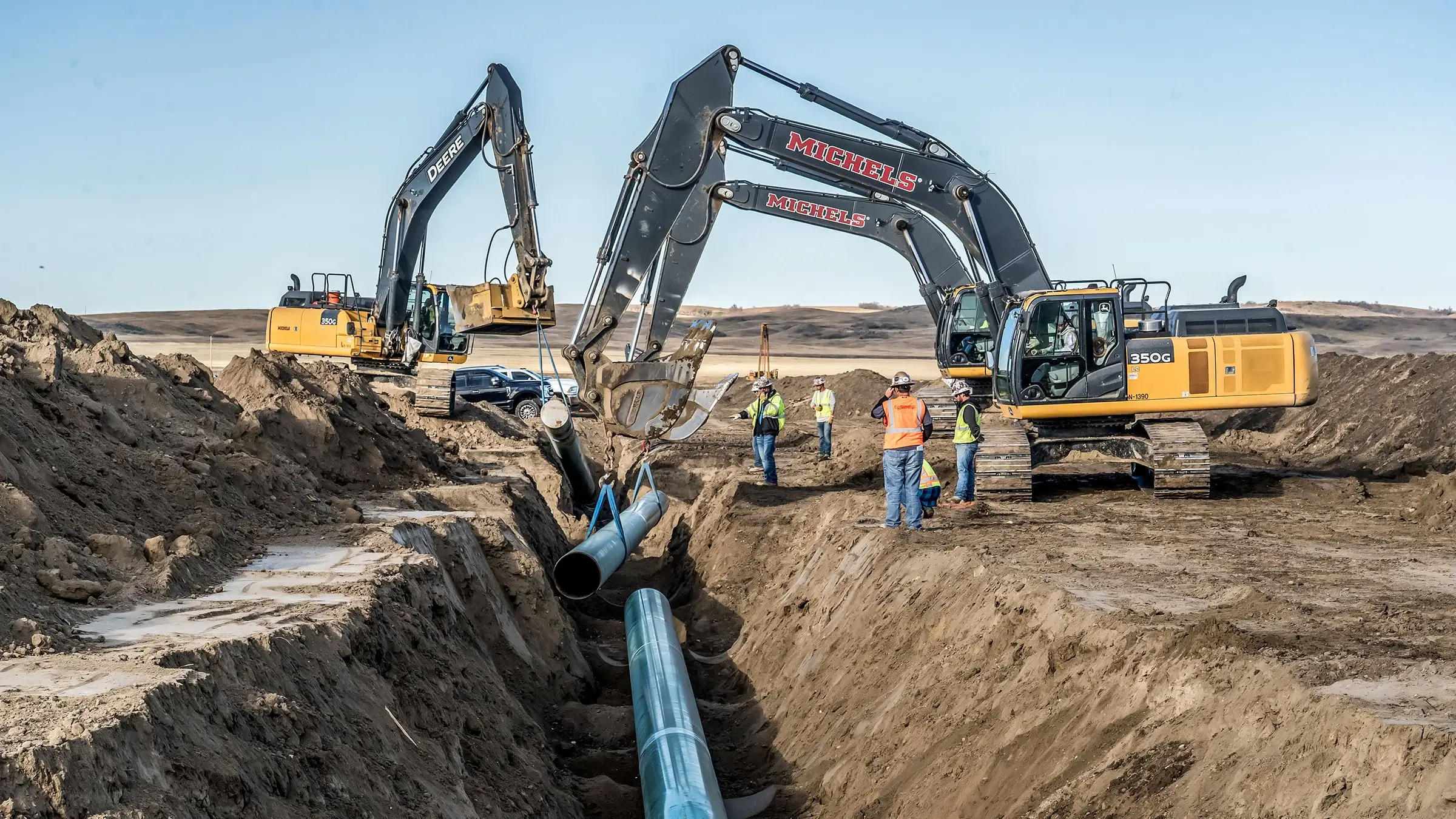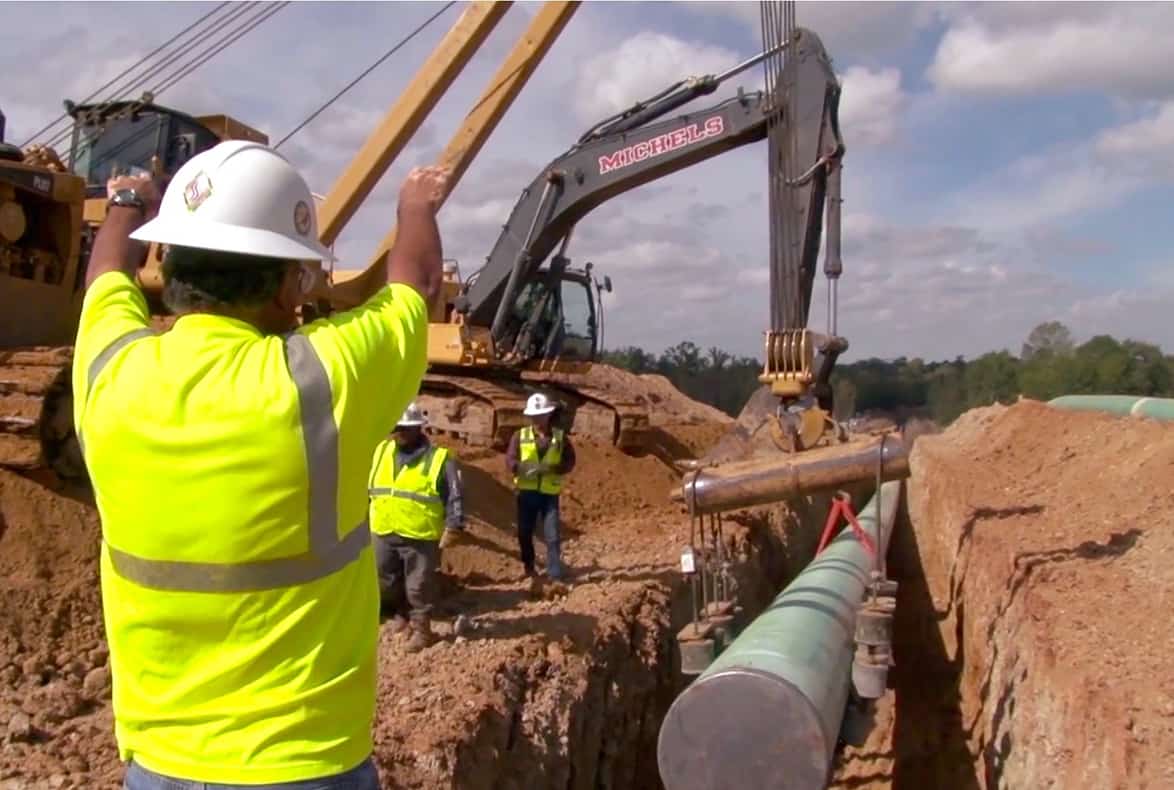Need Immediate Support? With Creek Pipe contact Info Ready
The Value of Pipeline Construction: Exploring the Solutions Supplied in the Industry
Pipeline construction is a critical element of modern-day infrastructure. It assists in the transport of important sources like oil, gas, and water. The sector encompasses different solutions, consisting of planning, site prep work, and setup. Each stage requires precision and adherence to security criteria. As areas depend on these systems for their incomes, recognizing the details of pipeline construction reveals its importance and prospective obstacles. What elements influence the success of these tasks?
Overview of Pipeline Construction Services
Pipeline construction services encompass a variety of specific activities created to assist in the installment of pipes for transporting various substances, including oil, gas, and water. These solutions typically include website prep work, excavation, installment of pipe sectors, and backfilling. Knowledgeable labor and innovative tools are basic for assuring each phase is carried out with precision and safety.Safety procedures are critical, as these projects frequently involve collaborating with unsafe products and in difficult atmospheres. Quality control measures ascertain that the pipes satisfy market standards and laws. In addition, the solutions may involve trenchless modern technology, which decreases surface area disruption.Environmental considerations play a significant duty in pipe construction, needing assessments and reductions to shield surrounding communities. In general, pipe construction solutions are important for developing the facilities required for power and water circulation, supporting both economic development and social requirements.
Preparation and Design in Pipeline Projects
Reliable planning and layout are critical elements of successful pipe projects, ensuring that all facets are meticulously resolved before construction starts. This phase entails extensive feasibility research studies that assess the technological, financial, and environmental variables influencing the task. Engineers and designers team up to produce thorough plans that detail the pipeline path, materials, and construction techniques, aligning with regulative needs and industry standards.Advanced software program and modeling techniques are typically used to simulate different circumstances, enhancing the layout for efficiency and security. Ecological influence assessments are carried out to minimize prospective damage to ecosystems and neighborhoods, mirroring a commitment to lasting practices. In addition, stakeholder interaction is necessary, fostering communication and addressing issues from impacted events. Ultimately, efficient preparation and style established the structure for a pipeline project, lessening threats and guaranteeing a structured construction procedure, ultimately adding to the total success of the procedure.
Site Preparation and Excavation
Comprehensive website prep work and excavation are crucial action in the pipe construction procedure. This stage entails a thorough assessment of the land where the pipeline will certainly be mounted. Task groups perform studies to determine soil types, topography, and existing utility lines to ensure a secure and effective excavation. Appropriate website preparation reduces environmental impact and facilitates smoother construction operations.Excavation follows, where heavy equipment is used to eliminate dirt and rock, creating a trench that meets the defined deepness and size for the pipeline. This process must abide by safety and security guidelines and environmental guidelines to stop damages to surrounding ecosystems.Additionally, erosion control actions are carried out to support the site throughout and after excavation. Efficient site prep work and excavation contribute greatly to the total success of pipeline projects, laying a strong foundation for the succeeding phases of construction.
Pipeline Installation Strategies
Pipeline installation methods are vital for the successful implementation of framework jobs. 2 famous methods consist of trenchless technology, which decreases surface disturbance, and the open-cut excavation process, recognized for its simple approach. Each method offers distinct benefits and considerations relying on project needs and environmental variables.
Trenchless Technology Approaches
While traditional techniques of pipeline setup often include considerable excavation, trenchless technology techniques supply a more effective and environmentally friendly choice. These innovative methods, such as straight directional exploration and pipe bursting, reduce surface area disturbance by permitting the setup of pipes without extensive digging. This not only lowers the ecological impact but likewise substantially cuts down on labor and repair prices. Trenchless methods help with the setup of pipes in city locations where traditional excavation would be not practical or destructive to existing infrastructure. Additionally, these methods can suit various dirt kinds and problems, making them versatile services for pipe construction. Ultimately, trenchless technology stands for a considerable development in the pipe industry, promoting sustainability her comment is here and operational performance.

Open-Cut Excavation Process
Open-cut excavation stays a fundamental strategy in pipe installation, characterized by the straight excavation of a trench to lay pipes. This method entails getting rid of soil and other products to produce a trench of sufficient deepness and size, enabling the placement of pipelines at the needed grade. Open-cut excavation is often favored for its cost-effectiveness and simpleness, especially in locations with steady soil problems. It can interfere with surface activities and requires mindful preparation to manage traffic and ecological impacts. Security actions must be implemented to shield workers and neighboring facilities during the excavation procedure. Overall, while open-cut excavation might not be suitable for all surfaces, it stays a widely utilized strategy in pipeline construction.
Checking and Quality Assurance
Examining and quality guarantee are crucial elements in pipe construction, guaranteeing that installments meet well established safety and security standards and performance needs. Various assessment strategies and methods are employed to examine worldly top quality and adherence to regulatory compliance. This organized approach assists determine possible concerns before they escalate, protecting the stability of the pipe system.

Assessment Techniques and Methods
Evaluation methods and approaches are important elements in making certain the integrity and security of pipe construction. Numerous approaches, including aesthetic examinations, ultrasonic testing, and radiographic evaluations, are utilized to identify defects and verify high quality. Aesthetic assessments enable the identification of surface anomalies, while ultrasonic testing uses acoustic waves to examine wall surface density and situate imperfections inside. Radiographic exams involve X-rays or gamma rays to produce photos of the pipeline's structure, revealing hidden issues. Additionally, pressure testing is performed to evaluate the pipe's integrity under functional problems. These approaches jointly add to a detailed understanding of the pipe's problem, allowing prompt maintenance decisions and ensuring compliance with sector criteria. Reliable assessment is important for protecting against failings and advertising long-lasting operational safety and security.
Safety And Security Specifications Conformity
Guaranteeing compliance with safety criteria is vital in pipeline construction, as it directly influences the job's overall quality and reliability. Complying with well established policies and guidelines assurances that construction methods alleviate risks related to pipe installation and procedure. Creek Pipe HDPE installation. Extensive screening procedures, consisting of non-destructive testing and pressure analyses, are important in confirming that pipes can withstand the functional tensions they will certainly experience. Quality control steps are additionally vital, as they develop a framework for regular monitoring and examination throughout the construction process. By prioritizing safety and security standards conformity, firms not only shield workers and the atmosphere yet also improve the honesty of the pipeline, eventually bring about long-term functional success and public count on the facilities
Product Quality Assessment
Product top quality assessment plays a considerable duty in the overall stability of pipe construction. This procedure involves extensive screening and quality control steps to assure that products meet industry requirements and requirements. Various tests, consisting of tensile toughness, deterioration resistance, and weld integrity assessments, are carried out to determine any kind of possible weak points. A comprehensive examination not just ensures the efficiency of the pipe however likewise improves security and resilience over its life expectancy. Furthermore, executing quality assurance procedures helps reduce risks connected with material failings, which can bring about pricey fixings and ecological dangers. By prioritizing material quality evaluation, companies can assure conformity with regulative requirements while fostering self-confidence amongst stakeholders in the integrity of their pipe systems.
Upkeep and Fixing Solutions
Maintenance and repair work services play a crucial role in the long life and effectiveness of pipeline systems. These services include normal examinations, repairing, and corrective activities to deal with damage, leakages, and other concerns that view it now might arise with time. Skilled technicians use advanced modern technologies such as ultrasonic screening and smart pigging to monitor pipe integrity, making certain that any type of potential issues are recognized early.Additionally, upkeep programs typically consist of arranged preventative steps designed to boost system reliability and minimize the possibility of unanticipated failures. Repair services might involve the substitute of broken sections, securing leaks, or utilizing trenchless technology for minimal interruption.
Environmental Conformity and Precaution
Pipeline systems not just require ongoing repair and maintenance to function successfully but likewise need to comply with strict ecological conformity and precaution. These laws are important for lessening eco-friendly impact and making sure public safety and security. Firms in the pipeline construction industry execute detailed ecological assessments before project initiation, determining prospective dangers to wild animals and ecosystems.Furthermore, adherence to safety and security methods protects workers and surrounding communities. This includes regular training on emergency reaction and spill prevention techniques.To preserve compliance, markets use checking technologies to spot leaks and other abnormalities in real-time. Ecological management strategies are often developed to outline actions for resolving unexpected problems throughout construction.Ultimately, navigate to these guys rigorous adherence to ecological compliance and precaution not only meets lawful responsibilities however also fosters lasting techniques within the market, promoting a balance in between facilities advancement and environmental stewardship.
Regularly Asked Inquiries
What Occupation Opportunities Are Available in Pipeline Construction?
Career possibilities in pipe construction encompass duties such as job managers, designers, welders, and security inspectors. These placements need diverse abilities, offering pathways for development in a necessary industry of infrastructure growth and energy circulation.

How Do Pipeline Projects Impact Citizen Communities?
Pipeline projects substantially affect local neighborhoods by influencing economic development, offering work opportunities, and boosting infrastructure. Nonetheless, they may likewise raise worries about ecological effects, land usage, and potential disturbances to community communication and natural ecological communities.
What Technology Is Used in Modern Pipeline Construction?
Modern pipeline construction uses innovative innovations such as GIS for mapping, drones for aerial studies, and automated welding systems to improve performance, security, and precision, inevitably facilitating the efficient transport of sources across numerous terrains. Creek Pipe pipeline construction.
Just How Are Pipeline Construction Expenses Approximated?
Pipeline construction costs are estimated through thorough analyses of products, labor, tools, and governing demands. Variables like surface, project dimension, and ecological considerations also substantially influence the general spending plan and monetary preparation for construction.
What Are the Biggest Challenges in Pipeline Construction Projects?
The greatest challenges in pipeline construction tasks consist of regulatory conformity, ecological issues, logistical issues, safeguarding funding, and handling labor lacks. Each aspect can substantially influence timelines and budget plans, making complex the total execution of the task.